How many species of Raccoons are found in Costa Rica?
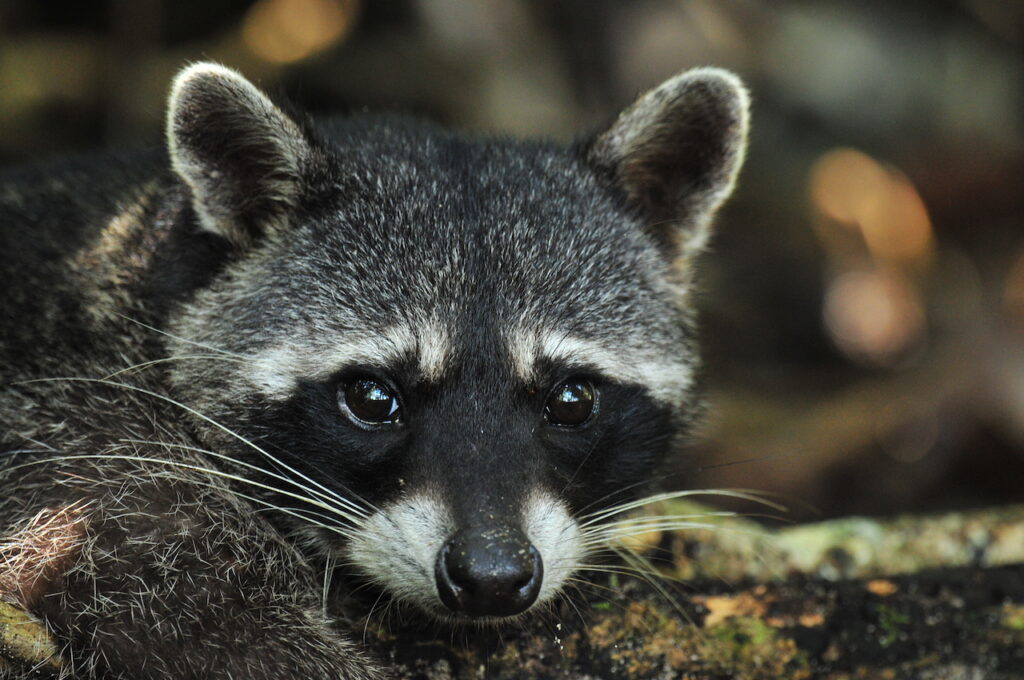
In Costa Rica we can find two species of Raccoons, distributed along the country. This specie belongs to the Procyonidae, which is a family of the order Carnivora, whose extant members are to some degree arboreal and are characterized by forefoot and hindfoot with five digits, short and curved claws, short rostums, unspecialized incisors, and small to medium size with medium to long tails. Sometimes known as the raccoon family, this taxon includes raccoons, coatis, kinkajous, olingos, ringtails and cacomistles, all of which are native only to the New World.
Raccoon (sometimes racoon) is the common name for any of the New World mammals comprising the genus Procyon of the Carnivora family Procyonidae. Raccoon comes from the North American indigenous word "arakun", meaning scratching hands.
In Costa Rica we found the following two species:
1. Crab-eating Raccoon (Procyon cancrivorus)
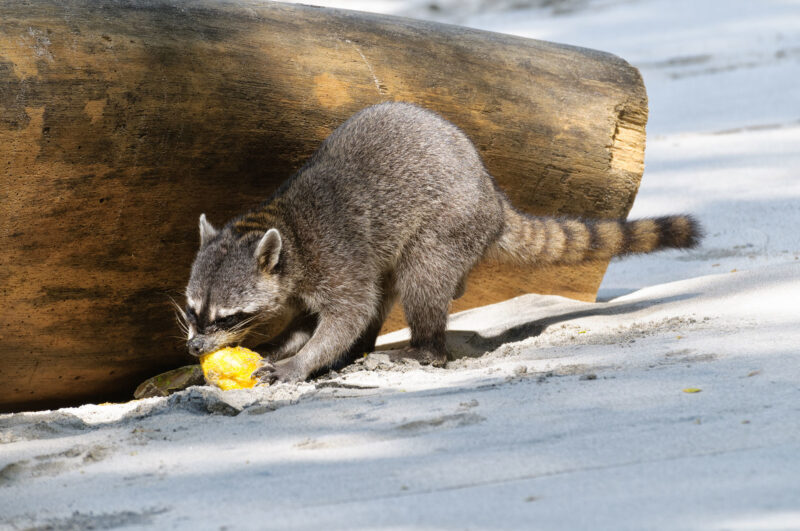
Procyon means doglike, and cancrivorus, crab-eating. Genus previously listed as Euprocyon.
Spanish: Mapache (or mapachín) cangrejero.
Range: Southwestern Costa Rica (up to at least Orotina and the Central Valley), and through South America east of the Andes to Uruguay and Argentina; from sea level to at least 1,200 m (4,000 ft); in foressed or disturbed habitats near fresh- or saltwater. This species replaces the northern raccoon in South America; the ranges of the two species overlap only in Costa Rica and Panama.
Size: 60 cm, 5 kg (24 in., 11 Ibs); males larger than females.
Similar species: P. cancrivorus is hard to distinguish from the northern raccoon (P. lotor) in the field. At close range, P. cancrivorus is said to give off a strong odor, which P. lotor does not. P. cancrivorus is slightly larger than P. lotor, with a less bushy and proportionately longer tail. Its fur tends to be shorter, stiffer, and less dense than that of the northern raccoon, for there is usually no underfur. The underparts and pale tail bands are often more orangey than those of P. lotor.
On the back of the crab-eating raccoon’s neck, the fur slants forward, starting with a whorl between the shoulders and meeting the regular, backward-facing fur along a V-shaped line between the ears. The northern raccoon has only backwards-facing fur on its neck. The feet and legs of P. cancrivorus are dark brown or blackish, whereas in P. lotor the forelimbs, and usually the hindlimbs, are pale gray. Note that habitat and crab-eating alone are not helpful in distinguishing the two species: the northern raccoon also frequents water, is fond of crabs and the like, and is abundant along the coast, while the crab-eating raccoon can also be found far inland.
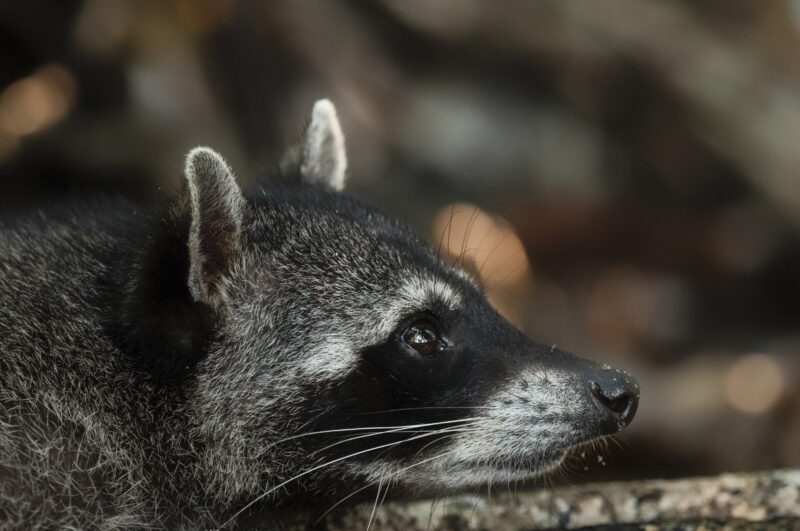
Natural history: Although this is the only raccoon species other than P. lotor that is widespread (there are five other raccoon species that are confined to certain islands, and some or all of them may be no more than subspecies of the northern raccoon), P. cancrivorus has barely been studied in the wild and very little is known of its natural history. Like the northern raccoon, the crabeater is largely solitary and nocturnal. In a study in Argentina, it was found to use secondary forests more than other habitats. Like P. lotor, it forages on the ground, but apparently always in or around water. It eats freshwater crabs (which can be common in forests far away from the coast), mollusks, fish, frogs, other small vertebrates, insects, and possibly fruits. It is a good climber, and dens in hollow trees. Captives have produced litters of two to six cubs, whose development is much like that of the northern raccoon. Crab eating raccoons in Manuel Antonio National Park are reported to give birth in July and August. Two radio-collared females there were found to use home ranges of about 4 to 6 ha (10 to 15 A) for much of the year, but only about 1 to 2 ha (2 ½ to 5 A) during the season of cub birth.
2. Northern Raccon (Procyon lotor)
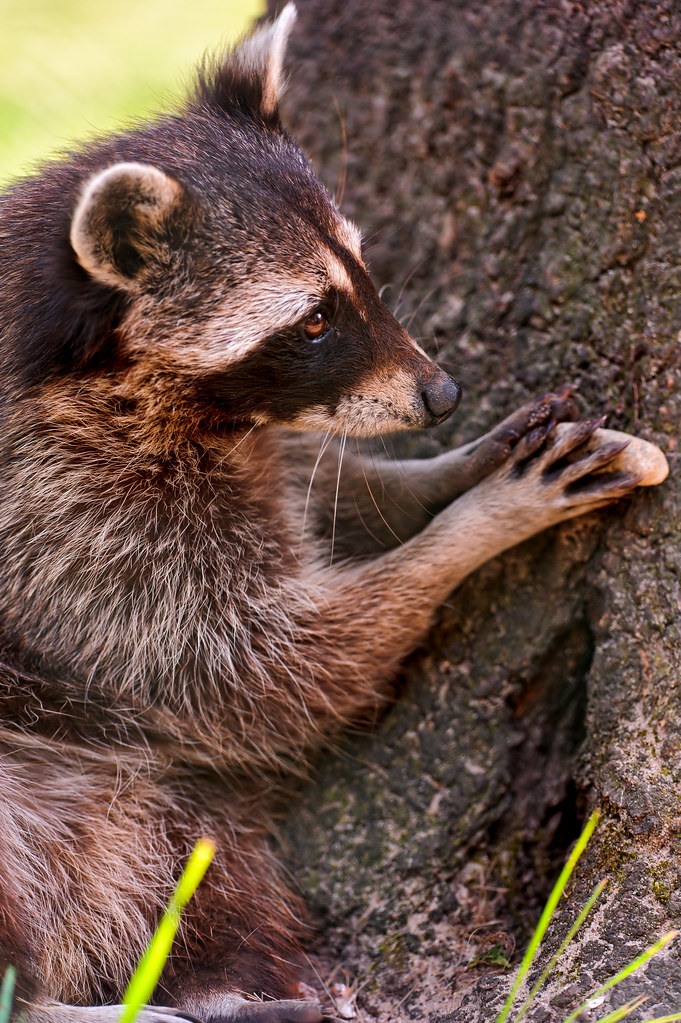
Names: Also known as the common raccoon. When first described, the species was listed as a bear (Ursus lotor). The species name comes from the Greek lotor, meaning washer, in reference to the habit of some captives of dousing food in water. Since captives both manipulate food in the absence of water and rinse wet, clean items, they may not really be washing. Wild raccoons haven't been observed dunking food, but they do often hunt in water. It has been suggested that the captives could be going through the motions of prey capture to entertain themselves, or that rinsed items can be better identified by the raccoon's unusually sensitive hands.
Spanish: Mapache (or mapachin) norteño.
Range: Southern Canada to Chiriquí, Panama (as well as France, Germany, the Netherlands, and Russia, where it was introduced as agame animal); from sea level to at least 2,800 m (9,200 ft); in forested and disturbed habitats, especially near water.
Size: 50 cm, 4 kg (20 in., 9 Ibs); smaller in Costa Rica than in North America; males larger than females.
Similar species: Crab-eating raccoon. In Costa Rica, the two species ranges overlap only in the Central Valley and in the southwest.
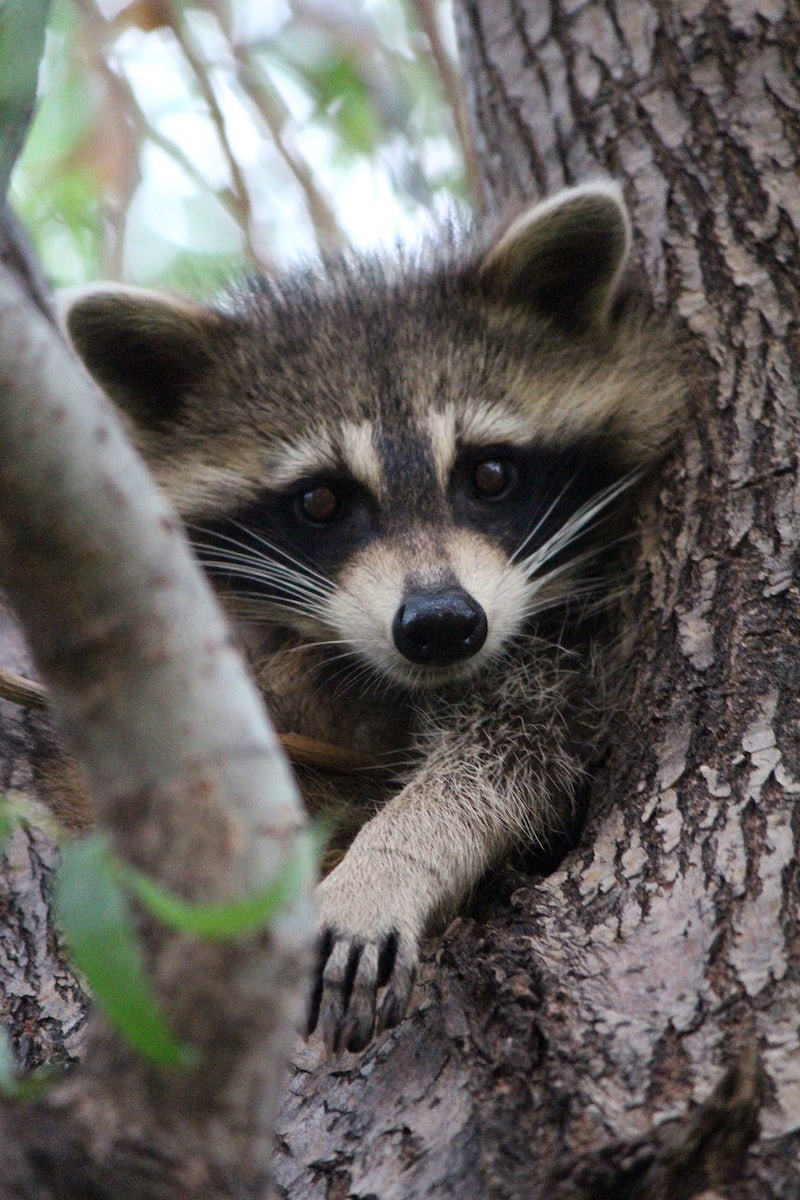
Natural history: Northern raccoons have been studied extensively in North America, but very little in the tropics, although studies done in Manuel Antonio National Park and Tapanti National Wildlife Refuge by Eduardo Carrillo and Christopher Vaughan have revealed some details of the species' natural history in Costa Rica.
Northern raccoons are mostly nocturnal; in some areas they also emerge by day. At Manuel Antonio, northern raccoons habitually start foraging before dark and continue after dawn, being most active from 5:00 to 10:00 PM and from 3:00 to 7:00 AM. Along the coast, they often forage during the day to take advantage of low tide. And a radio-collared female at
Tapanti foraged as much by day as by night, apparently to take advantage of dry spells. The varied diet of the northern raccoon includes crustaceans, fish, frogs, worms, bird or turtle eggs, fruits, nuts, insects, and rarely, small vertebrates or carrion. In Manuel Antonio, land crabs (Gecarcinus quadratus and Cardiosma crasum) are this raccoon's favorite food, and fruit makes up most of the rest of the diet. Northern raccoons den in cavities, preferring tree hollows well above the ground, but sometimes using other animals' ground burrows.
In North America, home ranges have been found to vary from 0.2 ha to 4,900 ha (½ to 12,000 A), but average about 40 ha (100 A) for females and about 60 ha (150 A) for males. The downpour-avoiding female in Tapanti was found to move more quickly and over shorter distances than a typical North American raccoon, and radio-collared raccoon at Manuel Antonio also had somewhat smaller ranges, averaging 28 ha (79 A) for males and 15 ha (37 A) for females. The home ranges of males overlap those of one or more females, but not those of other adult males.
The home ranges of neighboring females, who are often related, can overlap extensively. During breeding season, a receptive female will allow a male to hang out and mate with her for up to a week or so before driving him away. A gestation period of about two months produces one to seven young. Males are not allowed near the young; they sometimes kill and eat them. Young nurse for two to four months. In North America, most leave their mothers at about nine months. Siblings may stay together for a few months after leaving their mothers. Females usually remain in their natal areas. Thus, mothers and daughters often use overlapping ranges, and some continue to associate with one another well into their adult lives. In one study, three generations of the same matriline reared litters simultaneously in the same brush pile. Adult males, on the other hand, disperse. Marked males have been recaptured as far as 275 km (170 mi) away from their birthplace. Raccoons become reproductively active at the age of one to two years. Northern raccoons can live 20 years in captivity, but seldom survive more than five in the wild.
Sounds: Yelps, hisses, and growls in antagonistic situations; whines and deep, bouncy churring sounds (somewhat resembling the call of a crake) made during peaceful social interactions, especially between mother and young.
References:
Book – The Natural History of Costa Rica by Mark Wainwright
Link
